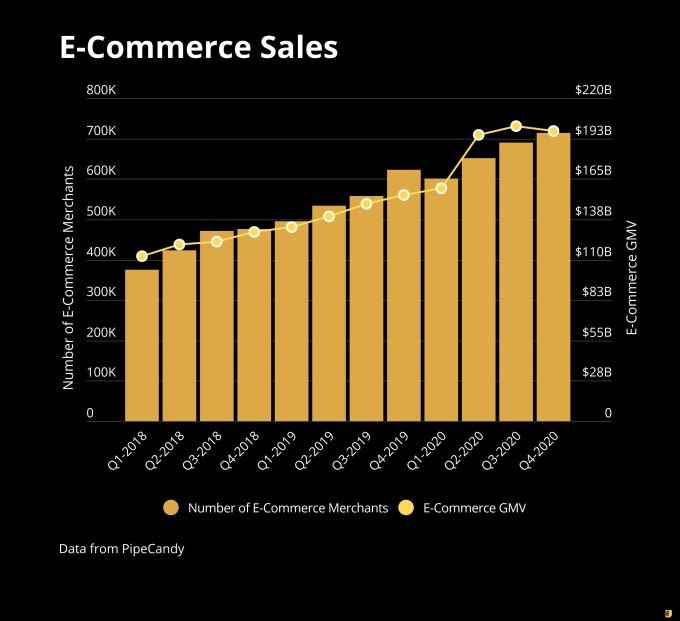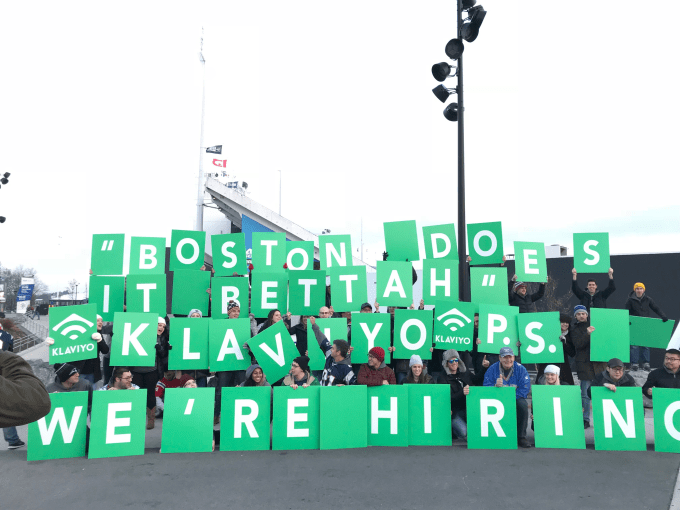Many of the stories in our EC-1 series tell tales of startups in the wilderness hacking out green field opportunities. Klaviyo is a different breed of company: One that went into an established market and challenged powerful incumbents, ultimately finding success with a new, more data-oriented generation of email marketers.
As such, the lessons that it offers are, perhaps, more subtle; its insights bordering on common sense.
But as the saying goes, common sense to an uncommon degree becomes wisdom. Here are four pieces of wisdom I’ve gleaned from Klaviyo’s story:
Drama and sizzle help companies stand out, undoubtedly. But are they necessary for success? Klaviyo’s story suggests otherwise.
Lesson 1: Drama and quirk aren’t necessary for startup success
Silicon Valley has become a showcase for oddity. Ironically, we all enjoy “Silicon Valley” (the show) or “The Social Network.” Unironically, we toss around phrases like “the hustle” and “sweat equity.” Hot companies often stand out with stories of intense struggle and failure, a larger-than-life founder or a chaotic (and often toxic) management structure.
Drama and sizzle help companies stand out, undoubtedly. But are they necessary for success? Klaviyo’s story suggests otherwise.
Klaviyo teaches that established patterns work. Make sure you’re building a product customers will actually pay for. Don’t get distracted or lost in competitive research. Keep the focus on customers as you hone your ideas. Don’t take venture capital if you can validate your idea without it. Build a company culture that empowers employees to use what they’ve learned from customers.
These lessons may well be common knowledge and aren’t all that exciting, but for Klaviyo, they have been extremely effective.
If there is anything odd about Klaviyo, it’s how intensely the company seems focused on its customers. Most tech companies claim to put customers first, but in practice adhere more closely to Steve Jobs’ pronouncement that customers don’t know what they want.
By comparison, Klaviyo started with intensive customer research to find a business model. That approach allowed the company to bootstrap and put off venture capital until conditions were favorable. Meanwhile, the founders’ customer-first attitude has turned into measurable requirements for the entire company, such as requiring employees to take regular calls with randomly chosen customers.
Entrepreneurial culture offers a wealth of similar lessons — ideas that we too often simply nod along with before moving on to focus on what’s new, unique or dramatic. But as Klaviyo shows, success can come from following well-known lessons exceptionally well.
Lesson 2: The e-commerce market still isn’t mature
Amazon is an anomaly. After surviving the dot-com bubble, Amazon went on to build a business that still looks futuristic today — even after competitors have had 20 years to catch up.

Amazon has created a distribution network unlike any other in e-commerce. Image Credits: JOHANNES EISELE/AFP via Getty Images)
In 2012, long after Amazon had already proven the value of data in e-commerce, Klaviyo saw that smaller competitors lacked the tools to compete on the same level. There were dozens of SaaS companies duking it out for the top email service provider position, but they universally failed to make data easy to collect and use. So Klaviyo’s founders, Andrew Bialecki and Ed Hallen, set out to build one of those missing tools.
“It always struck me as backward. You have customers; why aren’t you using the data they’re giving you? Data was always first and foremost what we wanted to do,” says Bialecki. “It was all about democratizing this kind of software. How do we give people the ability to do personalization and build it into the messaging?”
Large incumbents seem to dominate e-commerce today even more than they did in 2012. Shopify, WooCommerce and other storefront platforms appear to have their market stitched up. Facebook and Google are responsible for a predominant share of customer acquisition. Klaviyo and a handful of competitors lead in email services. Fulfillment is an open field outside of Amazon, but that field is overgrown with well-capitalized challengers.
But looks can be deceiving. E-commerce is still a young market with massive growth potential, even after the pandemic. Yet, the pain points of running an e-commerce business have not been solved. E-commerce entrepreneurs interviewed for this article noted that Klaviyo still stands out among its many competitors for its ease of collecting and using data. Outside of email, many other opportunities remain to make shopping easier, faster, more data-driven and more informed by personalization and automation for both customers and sellers.

Image Credits: PipeCandy
A complementary trend is the increasing need for e-commerce businesses to strike out on their own, away from the large platforms that helped foster them. Customer acquisition costs through Facebook and Google have risen steadily over the years, forcing businesses to build deep and direct customer relationships to survive. Amazon helped fuel the growth of many e-commerce startups with its Fulfilled by Amazon (FBA) service, but heavy competition among FBA sellers, and years of mounting evidence that the company attempts to copy and take over the most profitable businesses on its platform are increasingly pushing e-commerce companies to seek independence. Independence requires better SaaS services, though.
The final piece of good news for those who want to start e-commerce service businesses is that it’s an excellent environment to build a startup. Hallen notes that Klaviyo benefited greatly from being able to turn a profit as soon as it started and hold off on seeking venture capital.
“We could sell a customer that would pay us $500 per month, and with that we could pay the entire development,” says Hallen. “Marketing tech, in the small-to-mid market where people are spending real money and sales cycles are short, really fits well for bootstrapping.”
Lesson 3: You don’t have to be in Silicon Valley to succeed
While Boston is a biotech hub and has spawned a handful of top tech companies like Hubspot, Wayfair and Toast, its reputation as a sleepy, less-driven outpost persists widely in tech circles. Klaviyo stands as another data point that Boston startups can compete on equal footing.

Klaviyo team photo in Boston. Image Credits: Klaviyo
Midpandemic, though, the story has expanded beyond just Boston. Hallen, for instance, left Klaviyo because he wanted to pursue a relationship on the other side of the country. Bialecki now seems to have regrets about that decision. “We believed in having a team in one place, which feels a little anachronistic at this point,” he says.
More recently, Klaviyo has been on a hiring spree, picking up executives with experience at companies like Dropbox, Glassdoor, Rakuten, SAP and Palantir.
“The vast majority of those folks were not in Boston before we hired them. As we’ve poked our heads up, we’ve found ourselves with the capability to hire world-class talent,” says Hallen, who now helps source executive talent as part of his advisory role to Klaviyo. “The people who are a great fit are the same, with a humble, non-flashy desire to build a giant company, highly customer empathetic. They have kind of reasonably been mostly all over, and with COVID, they still live all over.”
To some extent, Klaviyo shows that companies can now enjoy the best of both worlds. Klaviyo’s newest executives may hail from top tech companies, but its employees who did originate in Boston seem to bring a fresh-faced idealism and loyalty that might not be found among the grizzled and flighty veterans of Silicon Valley.
“It’s crazy to me how many of the original 20 people are still at Klaviyo,” says Alexandra Edelstein, an early employee who is now a group product manager. “When people ask about our culture, I say humble, heads down. Everyone is no ego, heads-down focused on solving the hard problems at hand.”
Lesson 4: Klaviyo is all-in on “guided software”
SaaS companies are flush with money, as a VC panel recently told TechCrunch’s Alex Wilhelm, and Klaviyo is no exception, having raised $350 million in venture across two rounds and two years. The company has also benefited from a short sales cycle with a free-to-try model, allowing it to expand even during lockdowns.
Where will all that money go? Everyone in SaaS, it seems, has different theories of what will be the next big thing. Klaviyo’s bet, though, is on what it dubs guided software.
At its most essential, guided software is automation. Klaviyo already bills itself as automation software: With a few clicks, you can build a customer segment from existing data, choose an email template and create variations of that template for A/B testing.
So where, then, is the line between the automation of today and the guided software of tomorrow? It’s always difficult to get companies to talk about unreleased features, but as I spoke to the product and data science teams, a picture began to emerge. It started with two clues.
The first clue is the company’s new Benchmarks feature. If you’re a Klaviyo user who opts in for benchmarks, the company compares your performance on metrics like open rates and revenue per message to an anonymized set of your hundred most similar peers.
The second clue is that the company is pouring money and new hires into educational material like help documents, guides, email templates and Klaviyo Academy.
Klaviyo’s first step toward guided software will likely be to build a bridge between these two features. Using machine learning, the software will seek to understand the nature of a customer’s business and, crucially, its performance versus other, very similar businesses. When it detects that the customer is underperforming or needs guidance on a particular activity, such as building a new automated flow that pushes customers into a series of promotional emails, it will pair a suggestion to make changes or create an email with the right educational material and templates needed for the customer to accomplish that task.
Understanding the customer’s business, contextual performance against peers, and which tactics might work to increase performance is the easy part — assuming any of this can be called easy. The next step will be to add natural language processing technologies to actively change and adapt the wording and layout of a customer’s messaging. Ultimately, Klaviyo hopes that a relatively uninformed customer, encountering its software for the first time, will be able to build all the same campaigns and automations as an email expert without leaving the main interface. Very experienced users, on the other hand, may encounter no guidance at all.
This description is speculative, as is Klaviyo’s capability to accomplish it — in software, new features rarely go exactly as planned. However, the company seems convinced that it’s working against the clock and needs to enact some version of its vision within five years.
“We believe whoever emerges as the leader in the midst of this big shift are gonna be big winners,” says Conor O’Mahony, Klaviyo advisor and recently departed chief product officer. “We want to be one of those big winners.”
It’s certainly a winner for now. From its humble origins getting rejected from local accelerators to its evolution into a global startup unicorn, Klaviyo has pushed the frontiers of email marketing, transforming owned marketing into a critical function for every e-commerce company and enabling them to form deep emotional connections with customers. Klaviyo has helped turn one of the internet’s oldest technologies into the newest focus for commerce — and in the process, completely change the way businesses will be built this decade.
Klaviyo EC-1 Table of Contents
- Introduction
- Part 1: Origin story
- Part 2: Business and growth
- Part 3: Dynamics of e-commerce marketing
- Part 4: Lessons on startup growth
Also check out other EC-1s on Extra Crunch.
